Drosera spatulata propagation – cuttings
The easiest and fastest option to multiply your Drosera spatulata (or many other Drosera plants) is making leaf cuttings. They can easily grow tiny plants which take a lot less time than growing seedlings. Let’s see how you can easily make cuttings of your Drosera spatulata.
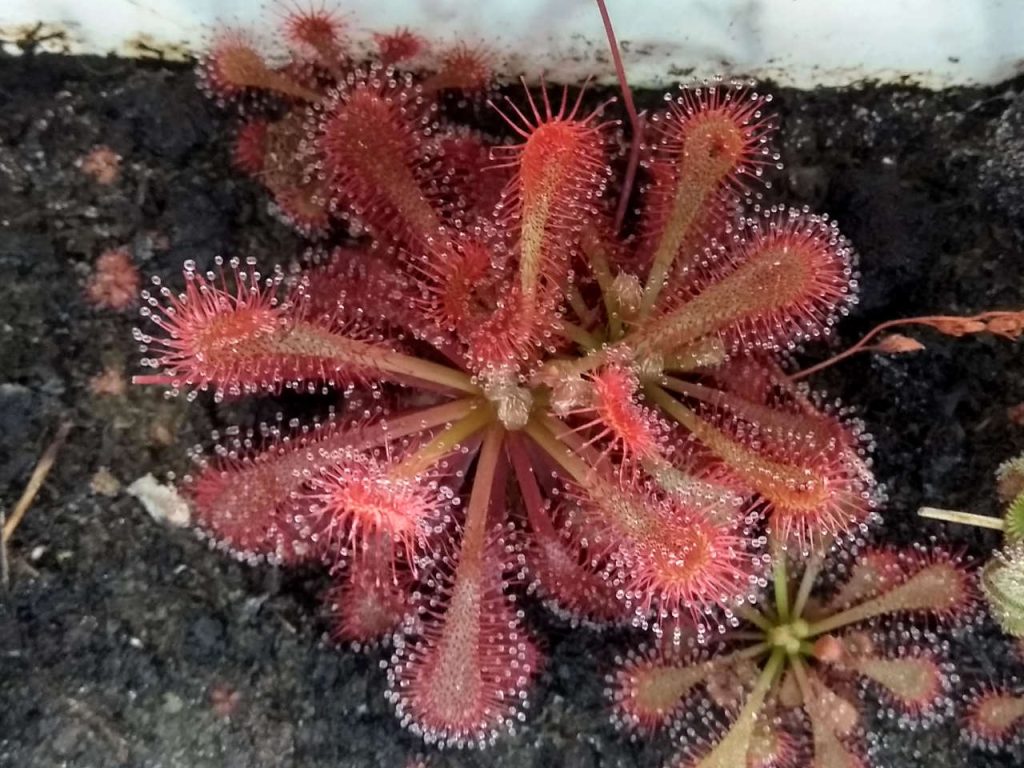
What do you need?
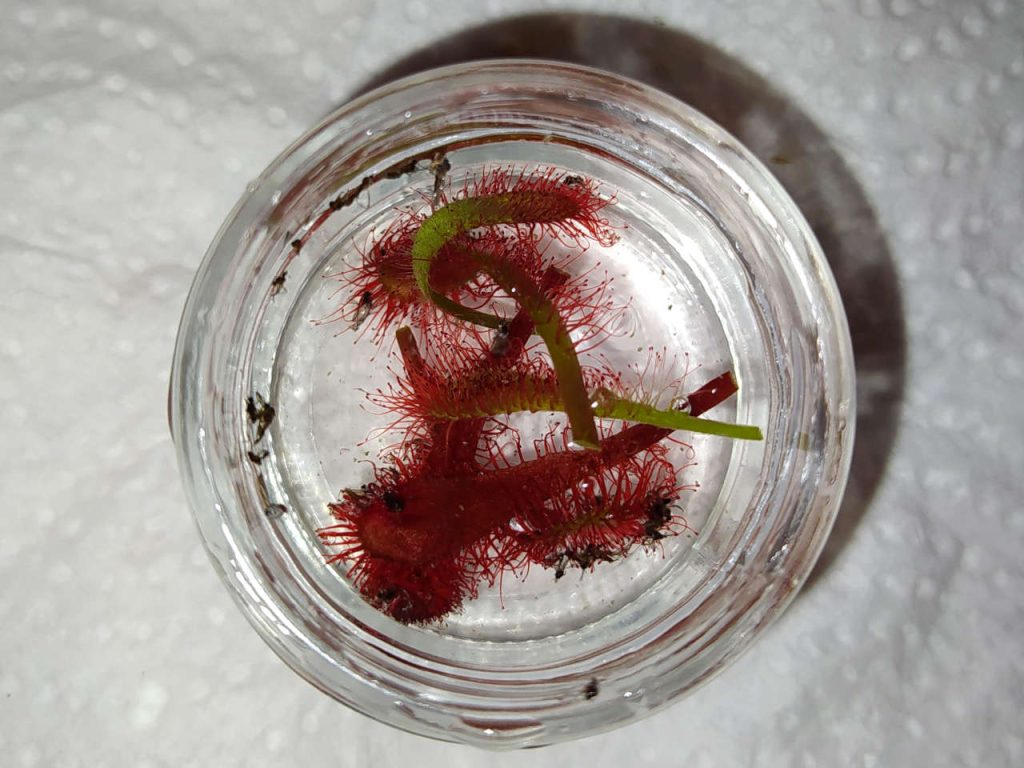
Like mentioned earlier, Drosera spatulata easily grows small plantlets from leaf cuttings. They don’t need any help using rooting hormones or growth regulators, the only thing they need is water. Speaking of water, it needs to have low TDS value (total dissolved solids). That means the water doesn’t have much salts in it, which are usually present in ground or tap water. The best option is if you can collect rain water. I usually wait for a while and discard the first couple of hours of rain, so the atmosphere and the roof cleans up a bit. I measured TDS and it can make quite a difference. If collected rain is not an option, you can use RO (reverse osmosis) water or distilled water.
How do you make the cuttings?
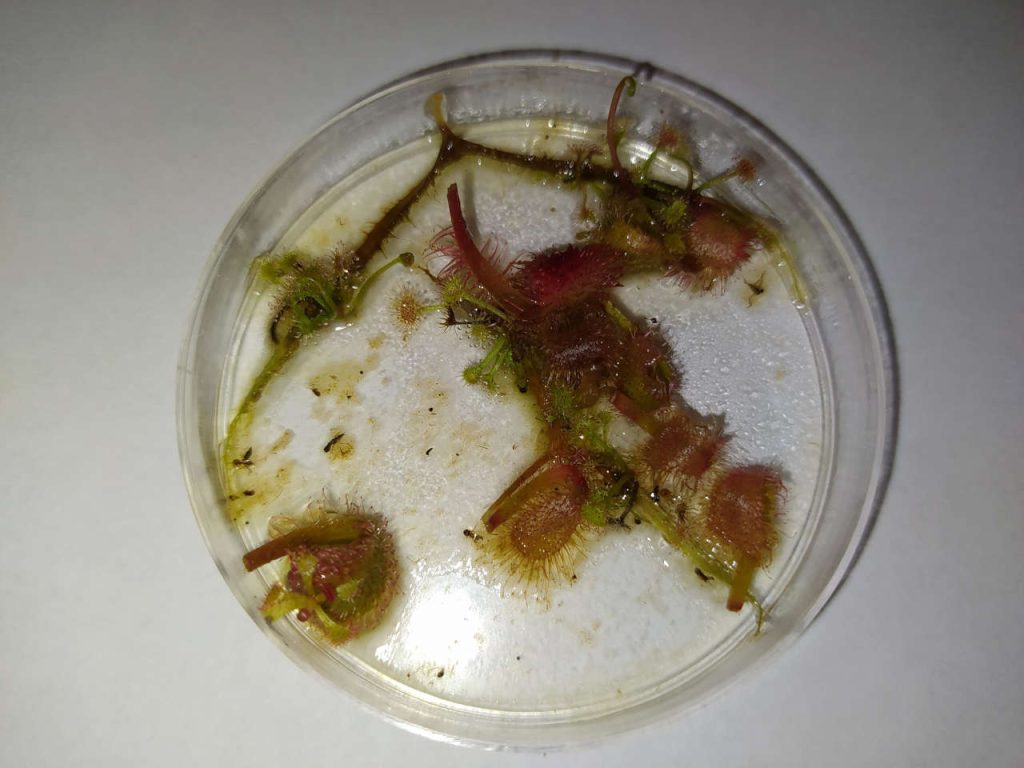
Making leaf cuttings is easy, you need small scissors and forceps. I make a cut as close to the base of the plant as possible and discard old and damaged leaves. Using forceps I pick out the leaves I just cut and place them into petri dish, filled half-way with distilled water. You can also use a glass or any kind of container that holds water. In an experiment with Drosera capensis a few years ago, I used zip-lock bags, which also worked.
How long does it take?
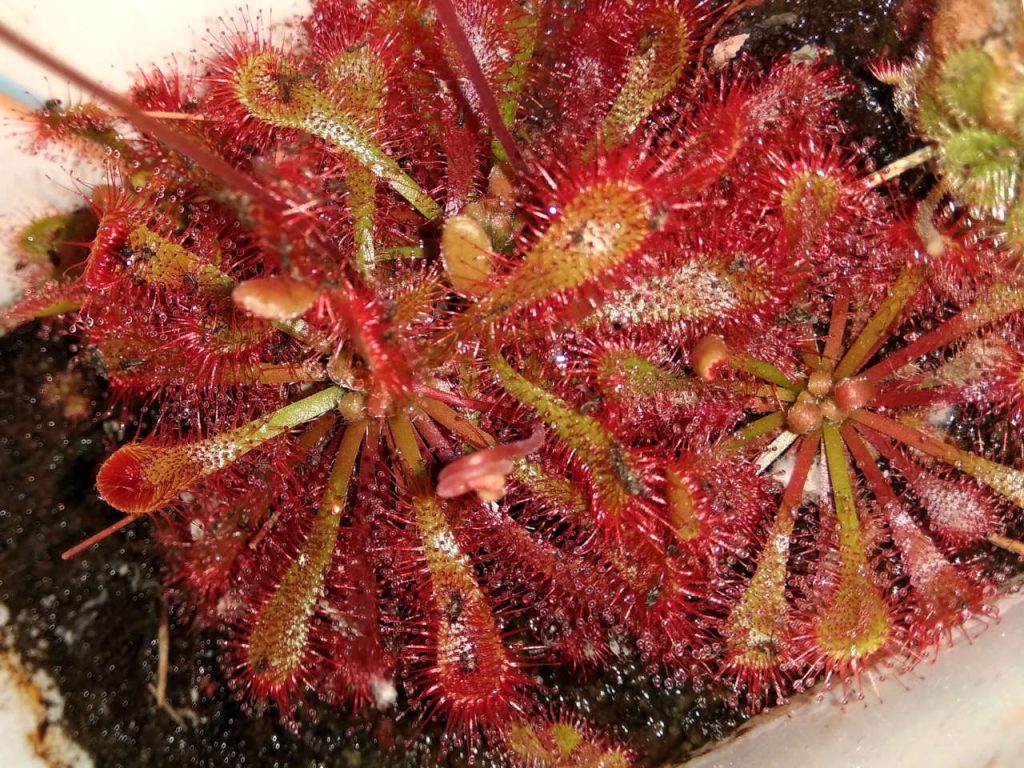
It can take quite some time before you see the first signs of life. Young, healthy and large leaves will take faster and grow more small plants, while smaller, older or damaged leaves usually take longer and produces only a couple of plants, some even fail. It usually takes around a month to get them started, but it often takes longer, up to two months. Beside health of the cuttings, there are other key factors that can also affect the speed of propagation – light and temperature. Keep them in light place but not directly exposed to sun. They grow well under artificial lights, I have set the lights to 16 hour day length. I try to keep temperature between 20°C and 30°C.
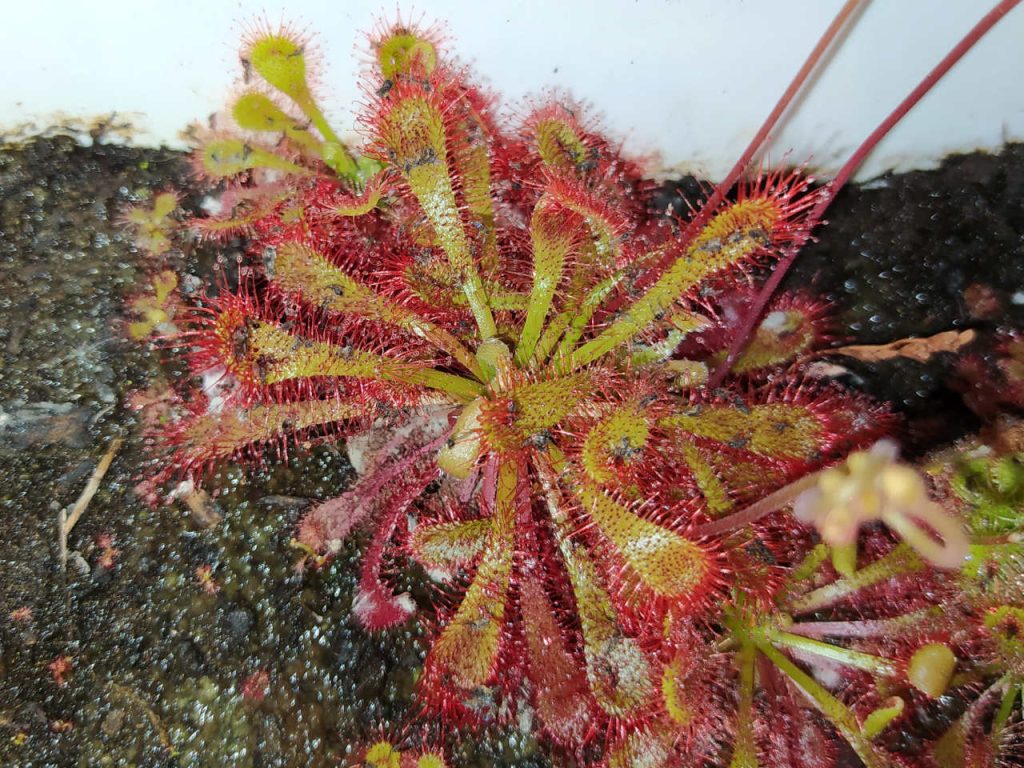
PROS / CONS compared to growing seedlings?
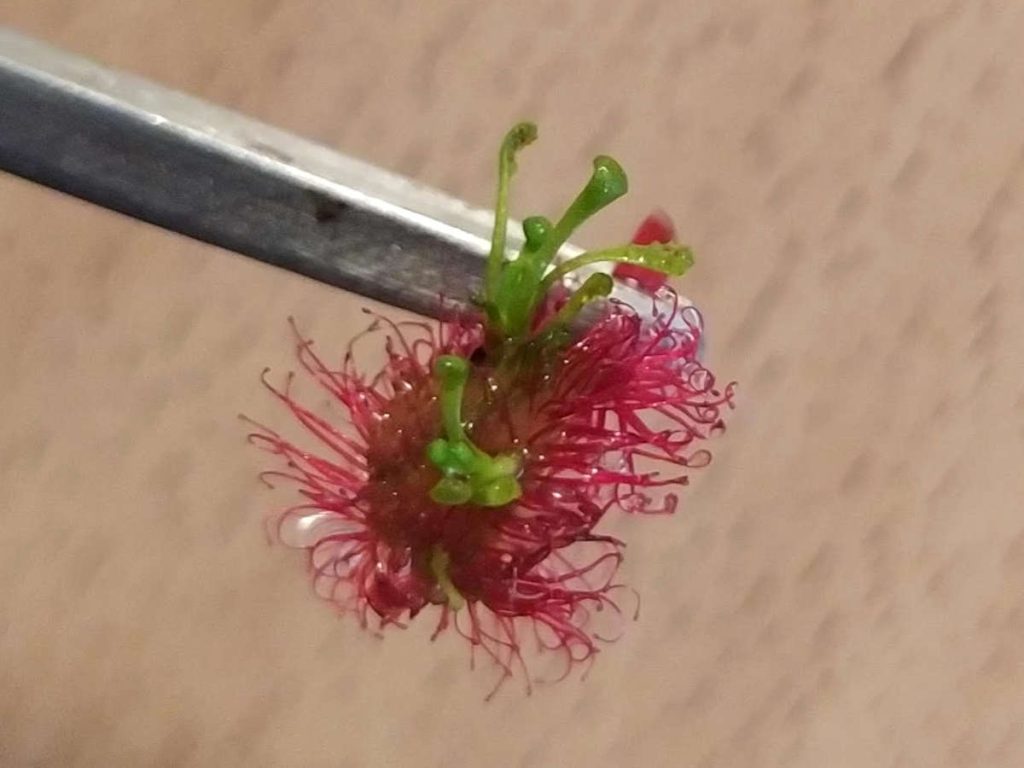
First there are pros:
Cuttings take off a lot faster than seedlings which can stay in their super tiny phase for quite some time.
When they first emerge, they can already start “hunting” small insects. Seedlings are usually too small to catch even the smallest springtails.
All the seedlings are identical to their parent plant – they are clones. That comes especially handy with Drosera hybrids that are not fertile.
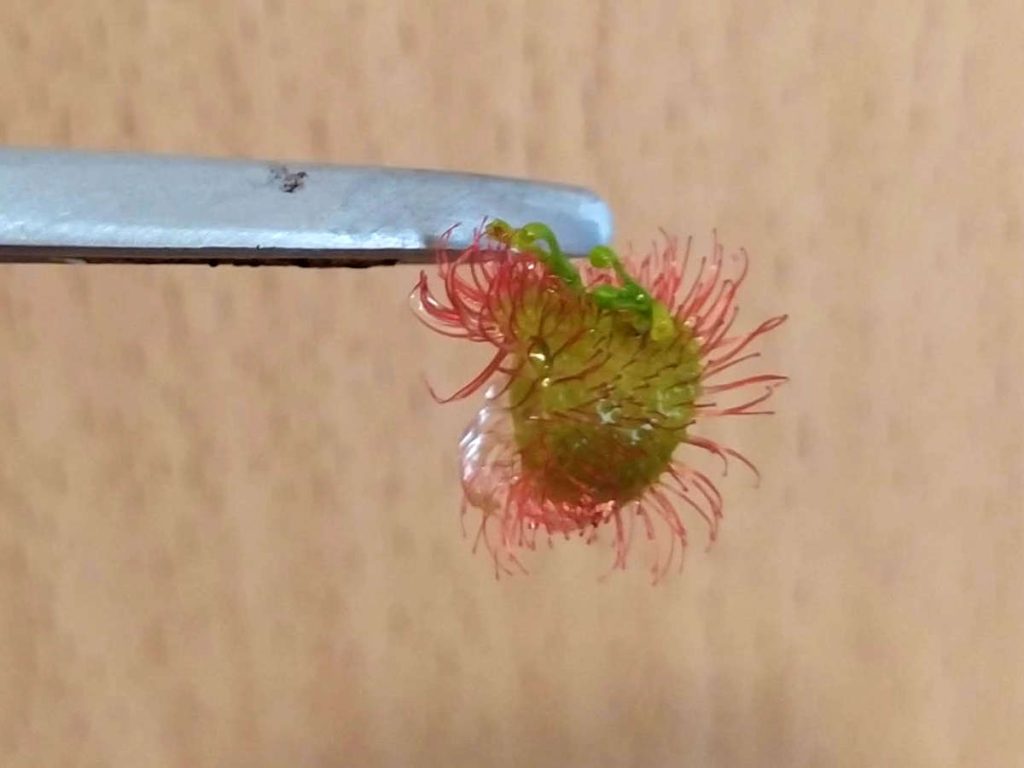
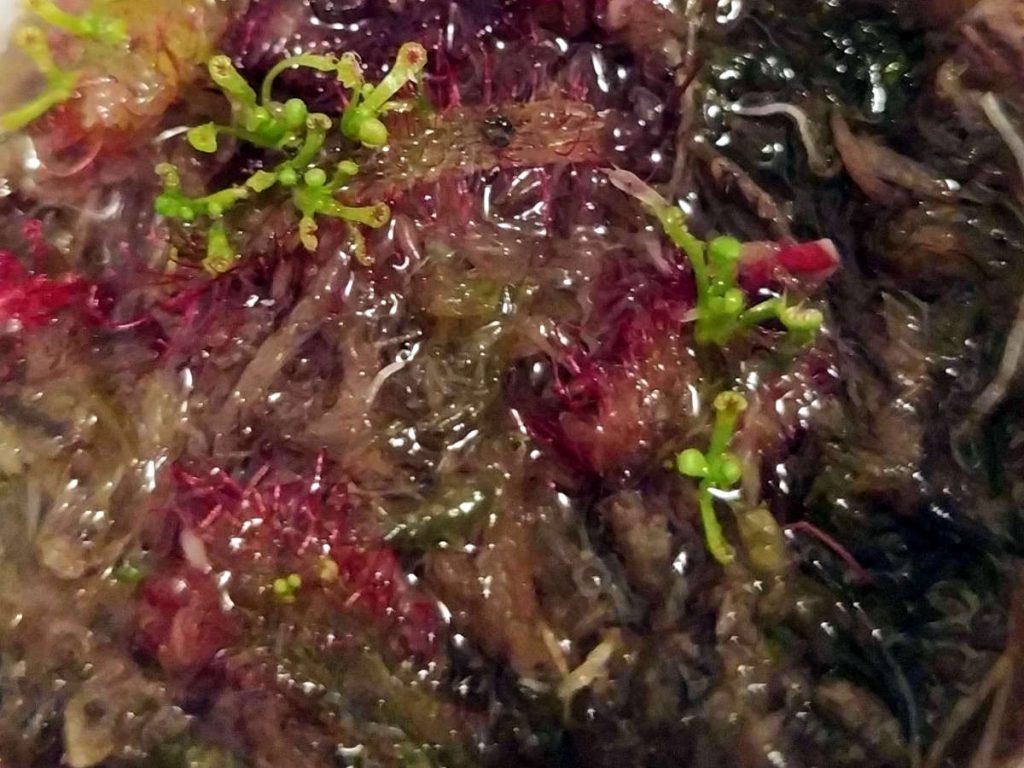
Cons of taking cuttings are:
They are clones. There is no biodiversity in that, all the plants you get are identical, they have the same vigor, same shape, color,… As it is a good thing, it can be a bad thing as well. I like diversity!
By generative (sexual) reproduction, you can get hybrids and selectively breed your plants, trying to get their best characteristics and create a superior seedling. That alone makes it worth playing with the seeds, it’s just not to make a lot of plants in a shortest time possible.